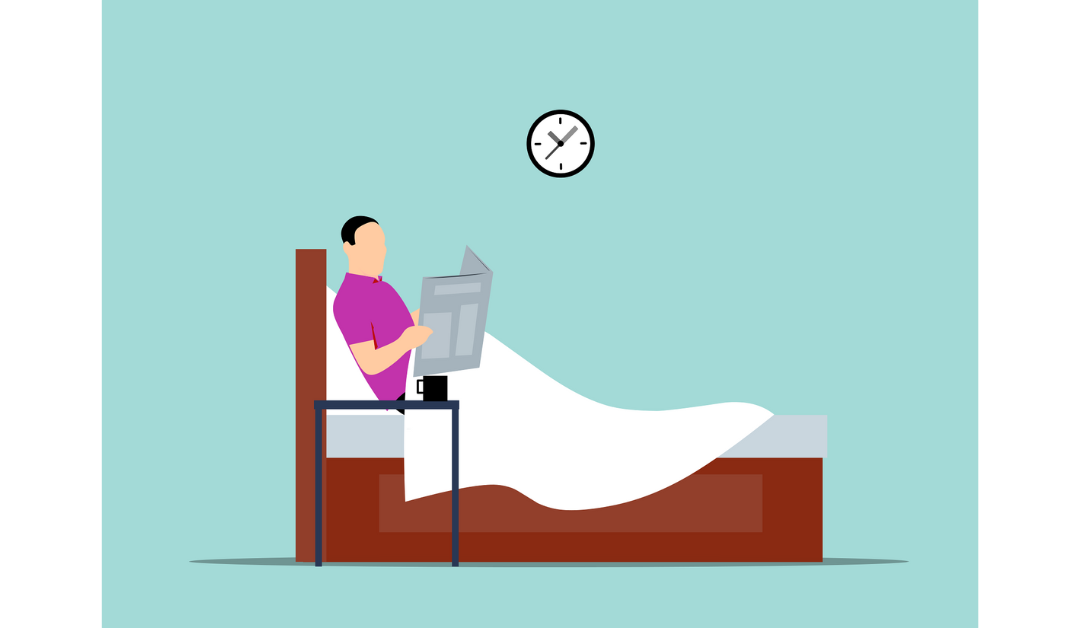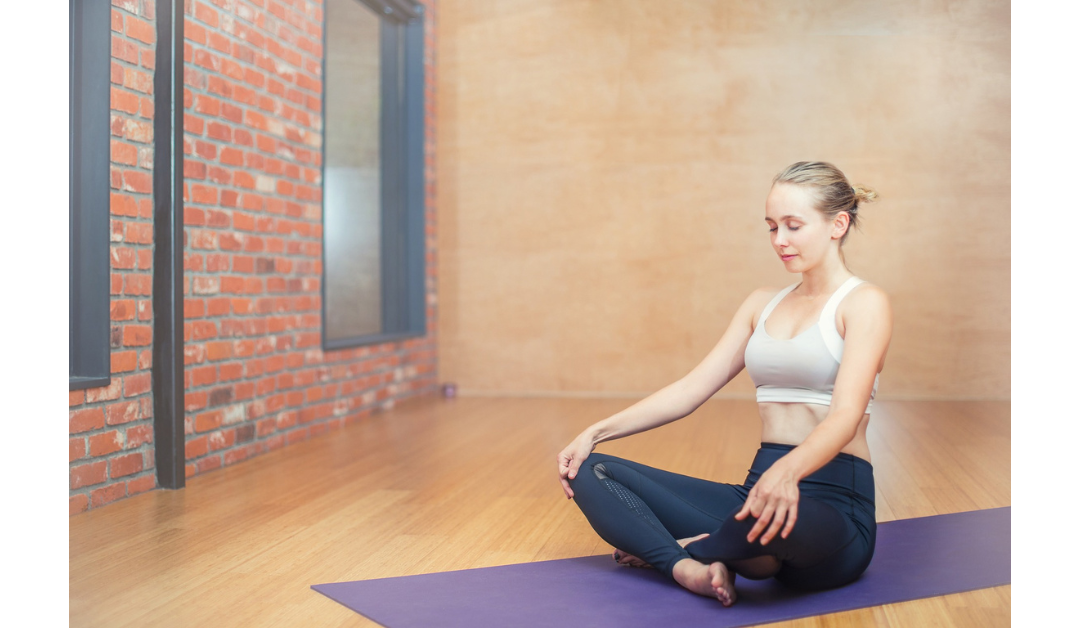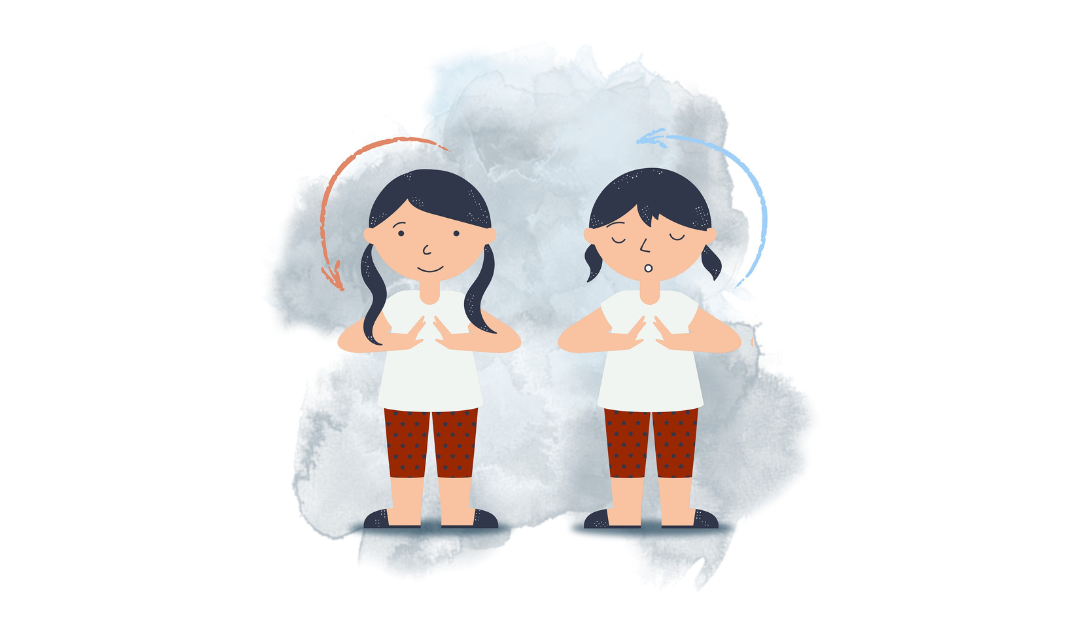
by Calien Trevino | Oct 18, 2024 | Anxiety, General, Trauma- and Stressor-Related Disorders
Hey there, glow-getters! 🌟 Let’s talk about something that’s seriously transformational: self-love. In a world that often pushes us to seek validation from others, embracing self-love is like finding your personal superpower. It’s not just about pampering yourself (although, yes, facials and bubble baths are amazing); it’s about creating a positive relationship with yourself that boosts your overall well-being.
In this blog, we’re diving into why self-love is so crucial, how to practice it, and what happens when we don’t. Plus, we’ll share some awesome activities to help you get started on your self-love journey. Ready to glow up? Let’s get into it!
Why Self-Love is Essential
First things first—why is self-love so important? When you practice self-love, you’re essentially giving yourself permission to be your own biggest cheerleader. It’s about recognizing your worth, treating yourself with kindness, and making choices that nurture your well-being.
When you love yourself, you’re more resilient to life’s ups and downs. You’re better equipped to handle stress, make healthier choices, and bounce back from setbacks. Self-love also sets the tone for how others treat you. When you value yourself, you naturally attract people who respect and appreciate you. It’s like a magnetic force that draws in positivity and support.
The Impact of Not Practicing Self-Love
So, what happens when self-love is in short supply? When you don’t practice self-love, you’re more likely to fall into negative self-talk, self-doubt, and unhealthy habits. You might find yourself constantly seeking validation from others, feeling unworthy, or struggling with low self-esteem.
Lack of self-love can also lead to a cycle of self-sabotage. If you don’t value yourself, you might not take care of your physical or mental health, leading to burnout, anxiety, and a general sense of dissatisfaction. This cycle can be tough to break, but recognizing its impact is the first step toward change.
Self-Love Activities to Try
Ready to start your self-love journey? Here are some activities that can help you build a stronger relationship with yourself and boost your overall happiness:
- Practice Daily Affirmations: Start your day with positive affirmations. Say things like, “I am enough,” or “I am worthy of love and respect.” Repeating these affirmations can help shift your mindset and build self-confidence.
- Journaling: Take a few minutes each day to write down your thoughts and feelings. Reflect on your achievements, express gratitude, and set personal goals. Journaling helps you connect with yourself and track your progress.
- Self-Care Routines: Pamper yourself with regular self-care. Whether it’s a relaxing bath, a skincare routine, or simply taking time to unwind, make self-care a priority. It’s a way to show yourself that you’re worth the effort.
- Set Boundaries: Learn to say no to things that drain your energy or don’t align with your values. Setting boundaries is an act of self-respect and helps you maintain balance in your life.
- Engage in Hobbies: Spend time doing things you love and that bring you joy. Whether it’s painting, hiking, or reading, engaging in hobbies helps you stay connected with your passions and interests.
- Surround Yourself with Positivity: Surround yourself with people who uplift and support you. Positive relationships reinforce your self-worth and create a nurturing environment for personal growth.
- Mindfulness and Meditation: Practice mindfulness and meditation to stay present and reduce stress. These practices help you connect with yourself on a deeper level and promote inner peace.
- Celebrate Small Wins: Acknowledge and celebrate your achievements, no matter how small. Recognizing your successes boosts your self-esteem and encourages a positive self-image.
How Self-Love Affects Your Relationships
When you love and value yourself, it has a ripple effect on your relationships. Self-love creates a solid foundation of self-respect and confidence, which translates into healthier, more fulfilling connections with others.
When you’re in a good place with yourself, you’re less likely to seek validation from your partner or friends. Instead, you’re more likely to give and receive love from a place of abundance, not need. This balance fosters stronger, more supportive relationships where both partners feel valued and respected.
Final Thoughts: Embrace Your Inner Glow
Self-love isn’t just a buzzword—it’s a transformative practice that can enhance every aspect of your life. By practicing self-love, you’re not only improving your own well-being but also creating a positive environment for your relationships and personal growth.
So go ahead, start incorporating these self-love activities into your routine and watch as you begin to glow from the inside out. You deserve to be your own biggest fan and to treat yourself with the love and respect you offer to others.
Remember, self-love is a journey, not a destination. Embrace it, nurture it, and let it guide you toward a happier, more fulfilled life.

by Calien Trevino | Oct 4, 2024 | Anxiety, General, Trauma- and Stressor-Related Disorders
Hey there, friend! If you’ve ever felt like your days are chaotic or you can’t seem to get a handle on your stress, listen up. I’m about to share a little life hack with you that can totally transform your mental and physical well-being—yep, I’m talking about morning and night routines!
Now, before you roll your eyes and think, “ugh, routines sound so boring,” I promise this isn’t about some strict, type-A schedule. This is all about creating small habits that set you up for success and help you feel more in control of your life. We all need a little structure in this crazy world, right? So, let’s dive in!
Why Routines Matter
Think of your morning and night routines as the bookends of your day—the things that hold everything else together. They’re like a little gift to yourself that says, “Hey, you matter!” When you start and end your day with intention, it sets a positive tone for everything that happens in between.
Plus, routines are great for both your mind and body. They help reduce stress, improve focus, and even support better sleep and energy levels. It’s like pressing the reset button on your day. Who doesn’t need that?!
Creating a Morning Routine You Actually Enjoy
Alright, let’s talk mornings. If you’re not naturally a morning person, that’s cool—you don’t have to become one. But creating a routine that eases you into the day can make a huge difference.
1. Ditch the Snooze Button
I know, I know. That extra 10 minutes in bed is SO tempting. But trust me, hitting snooze over and over just messes with your body’s natural rhythm. Try waking up at the same time every day—your future self will thank you for it.
2. Hydrate Before Coffee
Before you reach for that beloved cup of caffeine (no shade to coffee lovers), drink a big ol’ glass of water. You’ve been asleep for hours, and your body needs hydration. Plus, it’s a small act of self-care that can set the tone for a healthier day.
3. Move Your Body
No, I’m not saying you need to hit the gym at 6 AM. But a little morning movement can do wonders for your energy and mood. Whether it’s some light stretching, a quick yoga flow, or even just dancing around your room to your favorite playlist, get those endorphins flowing!
4. Take a Mindful Moment
Before diving headfirst into your to-do list, take a few minutes to clear your mind. This could be journaling, meditating, or just sitting in silence. Think of it as a mental reset that helps you start the day with focus and calm vibes.
Unwinding with a Night Routine
Now, let’s fast-forward to the end of the day. Your night routine is just as important as your morning routine because it sets you up for restful sleep—and we all know how much better life is with good sleep, right?
1. Turn Off Those Screens
About an hour before bed, start disconnecting from your phone, TV, laptop—basically anything with a screen. I get it, scrolling Instagram or watching Netflix is so tempting, but the blue light can mess with your sleep. Try reading a book or listening to some chill music instead.
2. Reflect & Release
Before you hit the sheets, take a few minutes to reflect on your day. What went well? What stressed you out? A quick journaling session or mental check-in helps you process everything so you’re not carrying the day’s baggage into your sleep. Let it go, Elsa style.
3. Make Your Bed a Sleep Sanctuary
Your bedroom should be your happy place—cozy, calm, and inviting. Invest in comfy sheets, lower the temperature, and keep the lights low. Bonus points if you use calming scents like lavender or chamomile. Your bed should be a place you want to crawl into.
4. Stick to a Sleep Schedule
Just like waking up, going to bed at the same time every night helps regulate your body’s internal clock. The more consistent you are, the easier it’ll be to fall asleep and stay asleep.
Final Thoughts
There you have it—your guide to building healthy morning and night routines that’ll help you feel on top of your mental and physical game. The key here? Start small. You don’t need to overhaul your entire life overnight. Try adding just one or two of these tips into your day and see how you feel.
Remember, routines aren’t about being perfect. They’re about showing up for yourself in little ways, every single day. You deserve that, right?
Got any morning or night routine tips of your own? Share them with me in the comments—I’d love to hear what’s working for you!
Until next time, keep showing yourself that love and care. 💖

by Calien Trevino | Sep 27, 2024 | Anxiety, General, Trauma- and Stressor-Related Disorders
Let’s face it—we’re all stressed. Whether it’s work, relationships, or that endless social media scroll, the pressure is real. If you’ve ever found yourself tight in the shoulders, clenching your jaw, or feeling on edge for no reason, it might be time to try a simple, game-changing technique: Progressive Muscle Relaxation, or PMR.
But what’s PMR, you ask? It’s a guided technique where you tense up a muscle group, hold for a few seconds, then let it go completely. It’s like hitting the refresh button for your body and mind, one muscle at a time. Here’s why you should make PMR your new go-to chill-out routine:
1. Bye-Bye Stress, Hello Calm
When life’s got you in a chokehold, PMR helps you fight back. The process of tensing and relaxing muscles teaches your body the difference between being wound up and truly relaxed. So, when stress creeps in (and it will), PMR trains your body to release that tension quicker and easier.
2. Better Sleep Vibes
Ever find yourself lying awake, replaying the day’s drama over and over? PMR is like a reset button for your nervous system, helping you wind down and release the physical tension that keeps you tossing and turning. Incorporating it into your nighttime routine could lead to deeper, more restful sleep—goodbye late-night TikTok rabbit holes!
3. It’s Anxiety’s Worst Nightmare
If anxiety has been crashing your vibe, PMR can help ease those racing thoughts. When you’re in the middle of an anxious moment, it’s common to feel physically tight or jittery. By practicing PMR, you give your body a tool to slow down, letting you feel more in control of your physical and mental state.
4. Self-Care You Can Do Anywhere
The best part about PMR? You can do it literally anywhere. Stuck in traffic? PMR. Awkward Zoom meeting? PMR. Waiting for your coffee order? You guessed it—PMR! You don’t need special equipment or even a ton of time. Just a few minutes of focused muscle tensing and relaxing can make a huge difference in how you feel.
5. Strengthens Your Mind-Body Connection
One of the underrated perks of PMR is how it forces you to tune into your body. In a world where we’re often running on autopilot, it helps you reconnect with what your body’s feeling, making it easier to notice and address tension before it becomes a bigger issue. Think of it as a mental check-in, but for your muscles!
6. Improves Your Relationships
Feeling less stressed and more in tune with your body isn’t just good for you—it’s good for your relationships too. When you’re calmer, it’s easier to communicate, listen, and be present with your friends, family, or partner. And let’s be real: when you’re not carrying the weight of the world in your shoulders, it’s a lot easier to be kind and patient with others (and yourself).
How to Get Started with PMR
If you’re ready to give PMR a shot, here’s a super simple routine to try:
- Find a comfy spot. Sit or lie down somewhere you won’t be disturbed for a few minutes.
- Start with your toes. Tense the muscles in your toes for 5-10 seconds, then release. Really feel the difference between the tension and the relaxation.
- Work your way up. Move to your legs, stomach, arms, and all the way up to your face, tensing and relaxing each muscle group.
- Breathe deeply. Throughout the process, take slow, deep breaths to maximize the relaxation vibes.
- Repeat as needed. Do this once a day or whenever you need a quick reset!
Check out our podcast episode where we guide you through the PMR here: https://podcasters.spotify.com/pod/show/novatherapytx/episodes/Progressive-Muscle-Relaxation-e2mvmiq
PMR is a simple, no-cost way to chill out and show your body some love. So, next time stress strikes, take a minute, tense it up, and let it all go. Your muscles—and your mind—will thank you.

by Calien Trevino | Sep 24, 2024 | Anxiety, General, Trauma- and Stressor-Related Disorders
Let’s be real—break-ups suck. Whether you saw it coming from a mile away or it hit you out of nowhere, the aftermath can feel like an emotional rollercoaster. One day you’re totally fine, and the next, you’re crying over your ex’s old hoodie. Been there.
But guess what? This is actually the perfect time to focus on you. Yep, now that you’re out of that relationship, you’ve got a golden opportunity to shift the focus back to your own goals and personal growth. It’s time to thrive!
Step 1: Self-Care is Non-Negotiable
First things first: self-care. And no, I’m not just talking about bubble baths (though, let’s be honest, they help). Self-care after a break-up is about showing yourself the same love you’d give your bestie if they were going through this.
Start with the basics:
- Eat real food (yes, even if you don’t feel like it).
- Get enough sleep (Netflix won’t cure heartbreak at 3 AM, trust me).
- Move your body (a walk outside can do wonders).
I know it sounds obvious, but when your emotions are all over the place, even basic self-care can fall to the wayside. Don’t let it. Treat yourself like the priority that you are!
Step 2: Reflect, Don’t Ruminate
We’ve all done it—overthinking every detail of the break-up, playing things back in our heads. But instead of spiraling into a “what went wrong?” loop, try reflecting in a more constructive way.
Ask yourself:
- What did I learn from this relationship?
- What parts of me shined during the relationship?
- Where do I want to grow and improve for me, not for anyone else?
This kind of reflection helps you shift from “what was” to “what’s next.”
Step 3: Set Goals That Light You Up
Okay, so now that you’ve had some time to reflect, let’s talk goals. This is the exciting part—because now it’s your time to glow up and do things that make you happy.
Here’s how to start:
- Pick personal goals that actually excite you. Always wanted to learn how to make the perfect sourdough loaf? Go for it. Thinking about signing up for a yoga class? Now’s the time.
- Create a vision board. I know it sounds super 2010, but hear me out—putting your goals and dreams onto a board (whether it’s physical or digital) gives you something tangible to look at every day. Pinterest is your best friend here.
- Start small. Don’t overwhelm yourself by trying to accomplish everything at once. Pick one or two goals and break them into baby steps. You’ll feel a lot less overwhelmed when you see progress, even in tiny doses.
Step 4: Build Your Support Squad
When you’re going through a break-up, it’s so important to surround yourself with people who make you feel good. Your friends and family are the ones who will remind you of who you are when you’re feeling a little lost.
Pro tip: Share your goals with your crew. They’ll hold you accountable, cheer you on, and maybe even join you on some of your new adventures (hello, hiking buddy!).
Step 5: Say Yes to New Experiences
Now is the time to try new things. Whether it’s traveling to a new place, picking up a hobby, or meeting new people, stepping out of your comfort zone can be a game changer. Who knows? You might discover a new passion or meet some cool people along the way.
And let’s be real, the best way to move forward after a break-up is to embrace all the new possibilities that are in front of you.
Step 6: Prioritize Self-Love
Above everything else, make self-love your number one priority. At the end of the day, your relationship with you is the most important one. Be kind to yourself. Celebrate your wins, big or small. And remember that healing isn’t linear—some days will be harder than others, and that’s totally normal.
Step 7: Get Help When You Need It
Lastly, if you’re feeling stuck or overwhelmed, don’t hesitate to reach out to a therapist or life coach. Sometimes you just need an extra hand to help guide you through. There’s no shame in asking for help—it’s part of taking care of yourself.
So, to wrap it up: Break-ups are rough, but they’re also a chance to hit refresh on your goals, your self-care routine, and your life in general. Set some new intentions, surround yourself with good vibes, and most importantly, take it one step at a time. You’ve got this!
Ready to Thrive After Your Break-Up?
What goals are you setting for yourself? Let’s talk about it in therapy! Get started at www.novatherapypllc.com. And remember, you’re stronger and more resilient than you think. Keep glowing, and keep going. 💪✨

by Calien Trevino | Aug 22, 2024 | Anxiety, General
Hey there!
If you’ve ever found yourself constantly worrying about someone else’s feelings or needs—sometimes at the expense of your own—you might be dealing with codependency. Don’t worry; it’s way more common than you think. Let’s break it down and explore how to recognize, manage, and eventually break free from this cycle to foster healthier relationships.
What is Codependency?
Codependency is like that friend who seems super helpful but ends up taking over your life. It’s a pattern where you might prioritize someone else’s needs and emotions over your own, often to your own detriment. This dynamic usually happens in close relationships, whether it’s with a partner, family member, or friend.
Think of it as:
You feeling responsible for someone else’s happiness, even if it means sacrificing your own well-being. Over time, this can lead to a loss of self-identity, where you start to base your worth on how much you can do for others.
Signs You Might Be Codependent
- You’re the “Fixer”: Do you feel the need to solve everyone’s problems, even when they don’t ask for help?
- Difficulty Saying No: If you’re always saying yes, even when you’re exhausted or overwhelmed, that’s a red flag.
- Neglecting Your Own Needs: You might find that your own needs—whether emotional, physical, or mental—take a backseat.
- Feeling Incomplete Without Approval: Your mood might heavily depend on how the other person is feeling or treating you.
Why Does Codependency Happen?
Codependency often stems from experiences in early life. Maybe you grew up in an environment where you felt responsible for others’ happiness, or perhaps you learned that love and care meant putting others first, always. While these patterns are often unintentional, they can carry over into adulthood, influencing how you relate to others.
How Codependency Impacts Relationships
The impact of codependency on relationships can be pretty significant:
- Imbalance of Power: In a codependent relationship, one person may become overly dependent on the other, creating an unequal dynamic. The codependent person might feel responsible for maintaining the relationship, while the other might start taking advantage of this.
- Loss of Individuality: Over time, codependency can cause you to lose your sense of self. You might start to merge your identity with the other person’s, forgetting what makes you unique. This can lead to resentment or feelings of being trapped.
- Emotional Exhaustion: Constantly putting someone else’s needs before your own is draining. This can lead to burnout, where you feel emotionally and physically exhausted, which in turn strains the relationship.
- Stunted Personal Growth: When you’re focused on someone else’s problems, it leaves little room for your own growth. This can prevent both individuals in the relationship from evolving and achieving their full potential.
- Difficulty in Communication: Codependency often leads to unspoken expectations and assumptions. This lack of clear communication can result in misunderstandings, frustration, and conflict, making it harder to address issues in a healthy way.
Breaking the Cycle
Recognizing you’re in a codependent relationship is the first step. Here’s how to start changing the dynamic:
- Set Boundaries: It’s okay to say no! Start small, and practice asserting your needs and limits. Remember, boundaries are not about pushing people away—they’re about protecting your energy.
- Focus on Self-Care: Prioritize your own well-being. Whether it’s taking time for a hobby, seeking therapy, or just chilling with a good book, nurturing yourself is crucial.
- Cultivate Independence: Reconnect with what makes you, you. Explore your interests, passions, and goals that don’t involve anyone else.
- Seek Support: Sometimes, breaking the cycle requires a little help. A therapist or a support group can provide the tools and encouragement you need to shift the pattern.
Moving Toward Healthier Relationships
Breaking free from codependency is a journey. It’s about learning to value your own needs and emotions just as much as you value others’. Healthy relationships are built on mutual respect, where both people support each other’s independence while also coming together.
Remember:
You deserve relationships that uplift you, not ones that drain you. By recognizing and addressing codependency, you’re taking a huge step toward a more balanced, fulfilling life.
If you would like to address codependency concerns, visit us at www.novatherapypllc.com to get started.

by Calien Trevino | Aug 8, 2024 | Anxiety, General, Trauma- and Stressor-Related Disorders
Life’s hectic, right? Between juggling work, social life, and trying to squeeze in some self-care (hello, face masks and binge-watching), it’s easy to feel overwhelmed. But what if I told you there’s a super simple, totally free way to calm your mind and body in just a few minutes? Enter the 444 Box Breathing technique—your new BFF for stress relief.
So, What Exactly Is 444 Box Breathing?
It’s as simple as it sounds. The “444” stands for four counts in each step: inhale, hold, exhale, and then hold again. You do each for four seconds, and voilà—you’ve completed a cycle. Repeat this a few times, and you’ll start feeling like you’ve just finished a mini-meditation session.
Here’s how you do it:
- Inhale slowly through your nose for 4 seconds.
- Hold your breath for 4 seconds.
- Exhale slowly through your mouth for 4 seconds.
- Hold your breath again for 4 seconds.
That’s it. Seriously. So easy, you can do it anywhere—at your desk, in the car, or even during that awkward small talk at the grocery store.
Why It’s a Game-Changer
- Bye-Bye Stress
Ever notice how your breath speeds up when you’re stressed? The 444 Box Breathing technique helps you slow everything down. It tells your body, “Hey, chill out, we got this.” As you focus on your breathing, your heart rate drops, and your mind starts to clear up. It’s like pressing the reset button on a frazzled brain.
- Improves Focus
Whether you’re grinding through a tough work project or trying to nail that tricky yoga pose, this breathing technique can sharpen your focus. By practicing this regularly, you train your brain to stay calm and collected, which means less distraction and more productivity.
- Boosts Mood
Deep breathing isn’t just about calming down—it also helps lift your spirits. The increase in oxygen flow to your brain can make you feel more alert and positive. So next time you’re feeling a bit blah, try a round of 444 and notice the mood shift.
- Better Sleep
Struggling to fall asleep? (We’ve all been there, staring at the ceiling, replaying awkward conversations from 2010.) The 444 Box Breathing technique can help lull you into a more relaxed state, making it easier to drift off into dreamland.
How to Fit It into Your Day
Here’s the best part—you don’t need a fancy setup or a lot of time to practice this. Sneak it in wherever you can:
- Morning Routine: Start your day with a clear mind.
- Midday Break: Use it to recharge during lunch.
- Before Bed: Unwind and prepare for a restful night.
If you’re someone who needs a bit of structure, try setting a reminder on your phone or pairing it with another habit (like your morning coffee or evening skincare routine). The more you do it, the more natural it will feel.
The Takeaway
Life throws a lot at us, but with the 444 Box Breathing technique, you’ve got a simple tool to help you navigate it all. It’s quick, easy, and can make a real difference in how you handle stress, stay focused, and feel overall. So next time you’re feeling overwhelmed, remember: just breathe, 4-4-4, and let the calm take over.
Got a few minutes? Why not give it a try right now? You might be surprised at how good it feels. Feel free to check out Cat demonstrate the 444 breathing technique on our Nova Therapy: Nova Talk Podcast here: https://podcasters.spotify.com/pod/show/novatherapytx
Page 3 of 6«12345...»Last »

















